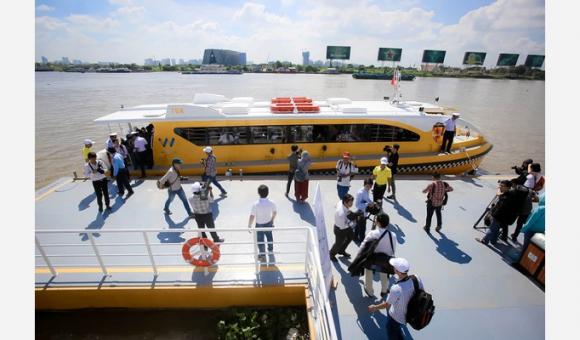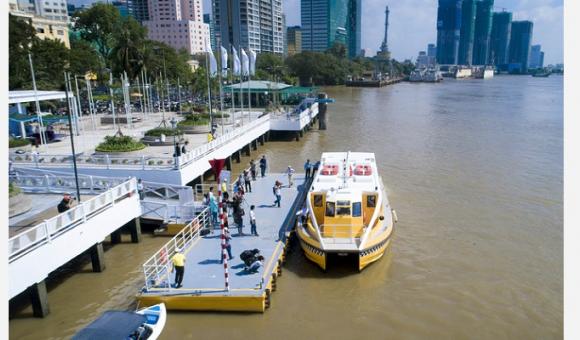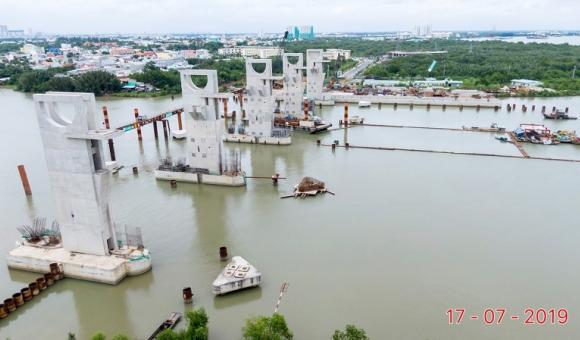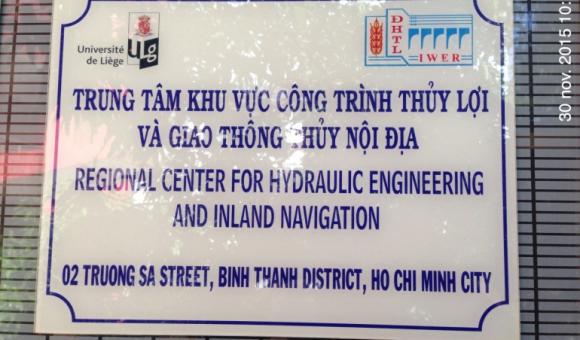
The first urban waterway lines are now in operation in Ho Chi Minh City. These are the fruit of a collaboration between Water Resources (Thuy Loi) University - WRU/TLU and ULiège, via the ANAST research group.
Ho Chi Minh City authorities have granted priority to the development of two main sectors: the development of an urban waterway transport system and a sustainable hydraulic engineering policy to prevent flooding.
Co-operation projects involve implementing a transfer of technology to enhance the quality of the teams and teachers, through higher education (four Executive Master Cohorts), continuous training, research (PhDs), innovation, and services to society through expertise. An Inland Navigation and Sustainable Hydraulic Structures R&D Centre was officially set up in Ho Chi Minh City on 16 March 2012 to co-ordinate these three types of action and help them cross-pollinate. This Training Centre is seen as the first International Centre specialising in these areas set up in Vietnam and the region (Laos, Cambodia).
This co-operative project has already delivered concrete achievements. These have benefited from the transfer of technology made possible by the three types of action outlined above.
On 21 August 2017, the first urban waterway line in Ho Chi Minh City was officially launched. The project to invest in public transport waterway services in Ho Chi Minh City is an eagerly-anticipated model. A second line was then brought into operation.
This type of project was put in place following a workshop (in 2014) initiated by the Université de Liège through the Naval Architecture, Maritime Engineering, Interior and Maritime Navigation, and Transport Systems Analysis Group (ANAST, for its acronym in French) focusing on urban waterway transport, an area which then became a priority for Ho Chi Minh City. The transfer of technology was not only carried out in situ, but project managers (public and private) travelled to Wallonia and Brussels. In the case of the Vietnamese R&D Centre Co-ordinator, this involved spending several months with ANAST. The director of a Ho Chi Minh City waterway transport firm, for their part, visited companies, taking part in meetings and technical visits, in particular at the “Meuse et Sambre” Naval Site and at “DN&T” a Walloon consultancy.
The Ho Chi Minh City region, like many other Mekong Delta regions in southern Vietnam, is home to a particularly dense network of rivers, waterways and canals. Given the frequent flooding of large neighbourhoods within the city, protecting urban areas from flooding by building flood barriers is a priority for city authorities.
Studies have been carried out (others are underway), and the ANAST has organised expertise-sharing initiatives to support science staff at the R&D Centre. The impacts of this work are evidenced by significant investments on the part of Vietnamese authorities to protect a large zone within HCMC.
This project is part of the Wallonie-Bruxelles/Vietnam 2019-2021 bilateral co-operation programme.




